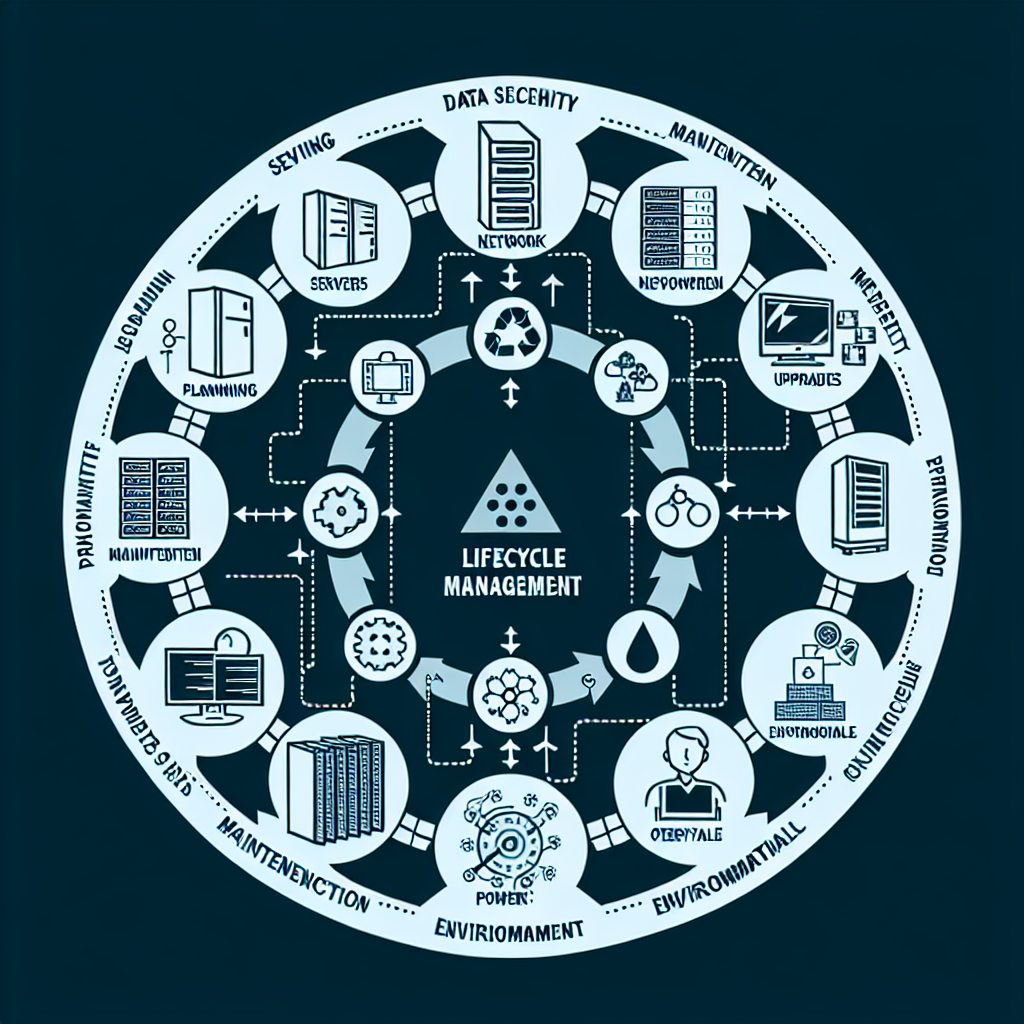Your cart is currently empty!
Key Considerations for Data Center Lifecycle Management

Data centers play a crucial role in the digital age, providing the infrastructure necessary for the storage, processing, and management of vast amounts of data. As organizations increasingly rely on data centers to support their operations, it is essential to have a comprehensive lifecycle management strategy in place to ensure the continued effectiveness and efficiency of these facilities. Here are some key considerations for data center lifecycle management:
1. Strategic Planning: Before embarking on any data center lifecycle management initiatives, it is crucial to have a clear understanding of your organization’s current and future needs. This includes assessing the capacity, performance, and scalability requirements of your data center, as well as identifying any potential risks or vulnerabilities that need to be addressed.
2. Infrastructure Assessment: Conducting a thorough assessment of your data center infrastructure is essential to identify any areas that may require upgrades or improvements. This includes evaluating the physical infrastructure, such as power and cooling systems, as well as the IT equipment, including servers, storage devices, and networking equipment.
3. Risk Management: Data centers are vulnerable to a wide range of risks, including power outages, equipment failures, and cyber attacks. Implementing robust risk management strategies, such as backup and disaster recovery plans, as well as security measures, is essential to ensure the continuity of operations and the protection of sensitive data.
4. Performance Monitoring: Monitoring the performance of your data center infrastructure is essential to identify any potential issues or bottlenecks that may be impacting efficiency and performance. Implementing monitoring tools and metrics can help you track key performance indicators and make informed decisions about when to upgrade or replace equipment.
5. Energy Efficiency: Data centers are notorious for their high energy consumption, so implementing energy-efficient practices and technologies is essential to reduce operational costs and minimize environmental impact. This includes optimizing cooling systems, virtualizing servers, and implementing power management strategies.
6. Compliance and Regulations: Data centers are subject to a wide range of regulations and compliance requirements, including data protection laws and industry standards. Ensuring that your data center meets these requirements is essential to avoid fines and penalties, as well as to protect the privacy and security of your data.
7. Lifecycle Planning: Developing a comprehensive lifecycle plan for your data center infrastructure is essential to ensure that equipment is replaced or upgraded at the appropriate time. This includes establishing a regular maintenance schedule, budgeting for equipment upgrades, and planning for end-of-life disposal.
In conclusion, effective data center lifecycle management is essential to ensure the continued effectiveness, efficiency, and security of your organization’s data center infrastructure. By taking into account these key considerations and implementing best practices, organizations can ensure that their data centers remain reliable, secure, and cost-effective for years to come.

Leave a Reply